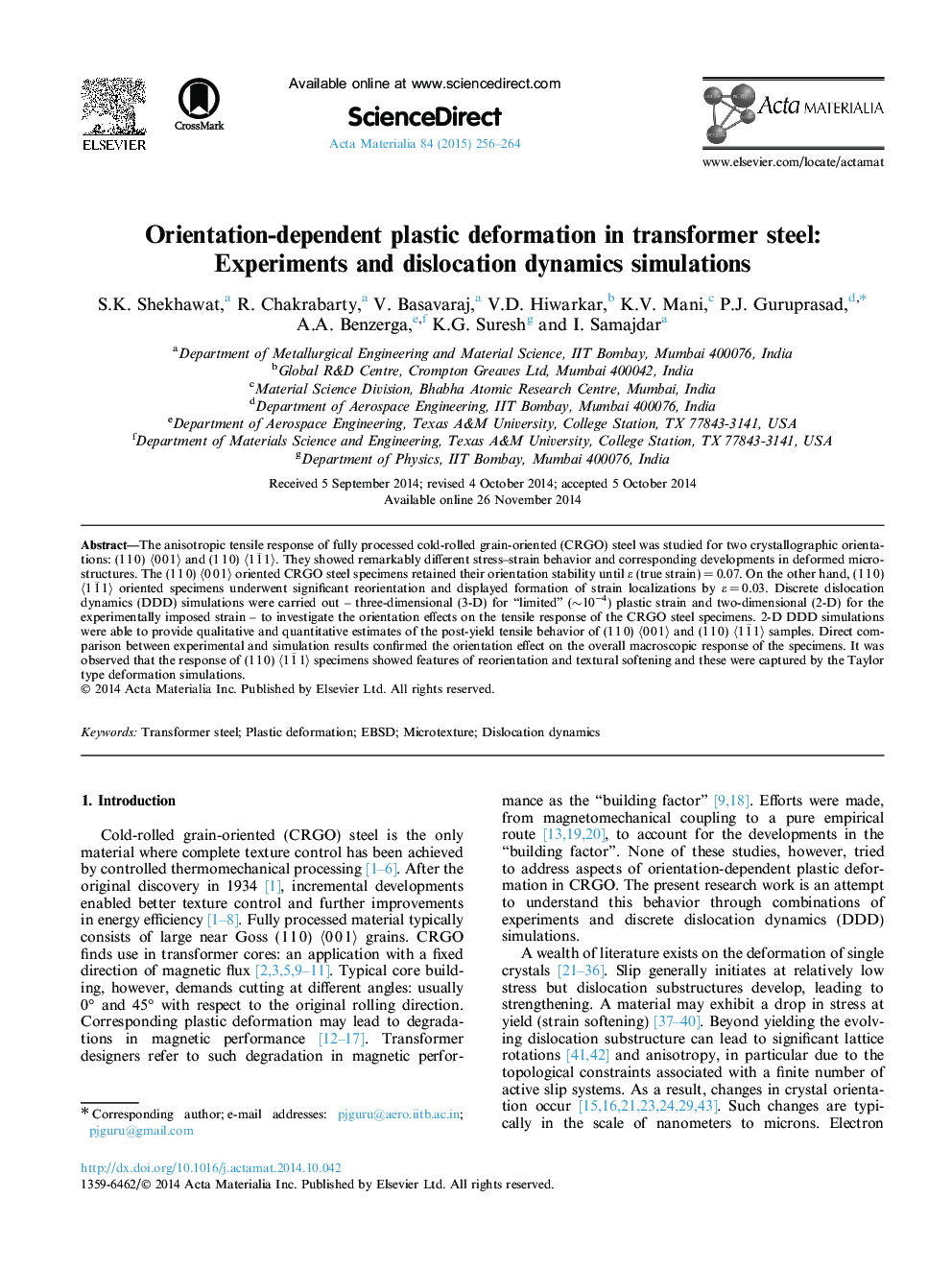| Article ID | Journal | Published Year | Pages | File Type |
|---|---|---|---|---|
| 1445433 | Acta Materialia | 2015 | 9 Pages |
The anisotropic tensile response of fully processed cold-rolled grain-oriented (CRGO) steel was studied for two crystallographic orientations: (1 1 0) 〈0 0 1〉 and (1 1 0) 〈1 1¯ 1〉. They showed remarkably different stress–strain behavior and corresponding developments in deformed microstructures. The (1 1 0) 〈0 0 1〉 oriented CRGO steel specimens retained their orientation stability until ε (true strain) = 0.07. On the other hand, (1 1 0) 〈1 1¯ 1〉 oriented specimens underwent significant reorientation and displayed formation of strain localizations by ε = 0.03. Discrete dislocation dynamics (DDD) simulations were carried out – three-dimensional (3-D) for “limited” (∼10−4) plastic strain and two-dimensional (2-D) for the experimentally imposed strain – to investigate the orientation effects on the tensile response of the CRGO steel specimens. 2-D DDD simulations were able to provide qualitative and quantitative estimates of the post-yield tensile behavior of (1 1 0) 〈0 0 1〉 and (1 1 0) 〈1 1¯ 1〉 samples. Direct comparison between experimental and simulation results confirmed the orientation effect on the overall macroscopic response of the specimens. It was observed that the response of (1 1 0) 〈1 1¯ 1〉 specimens showed features of reorientation and textural softening and these were captured by the Taylor type deformation simulations.
